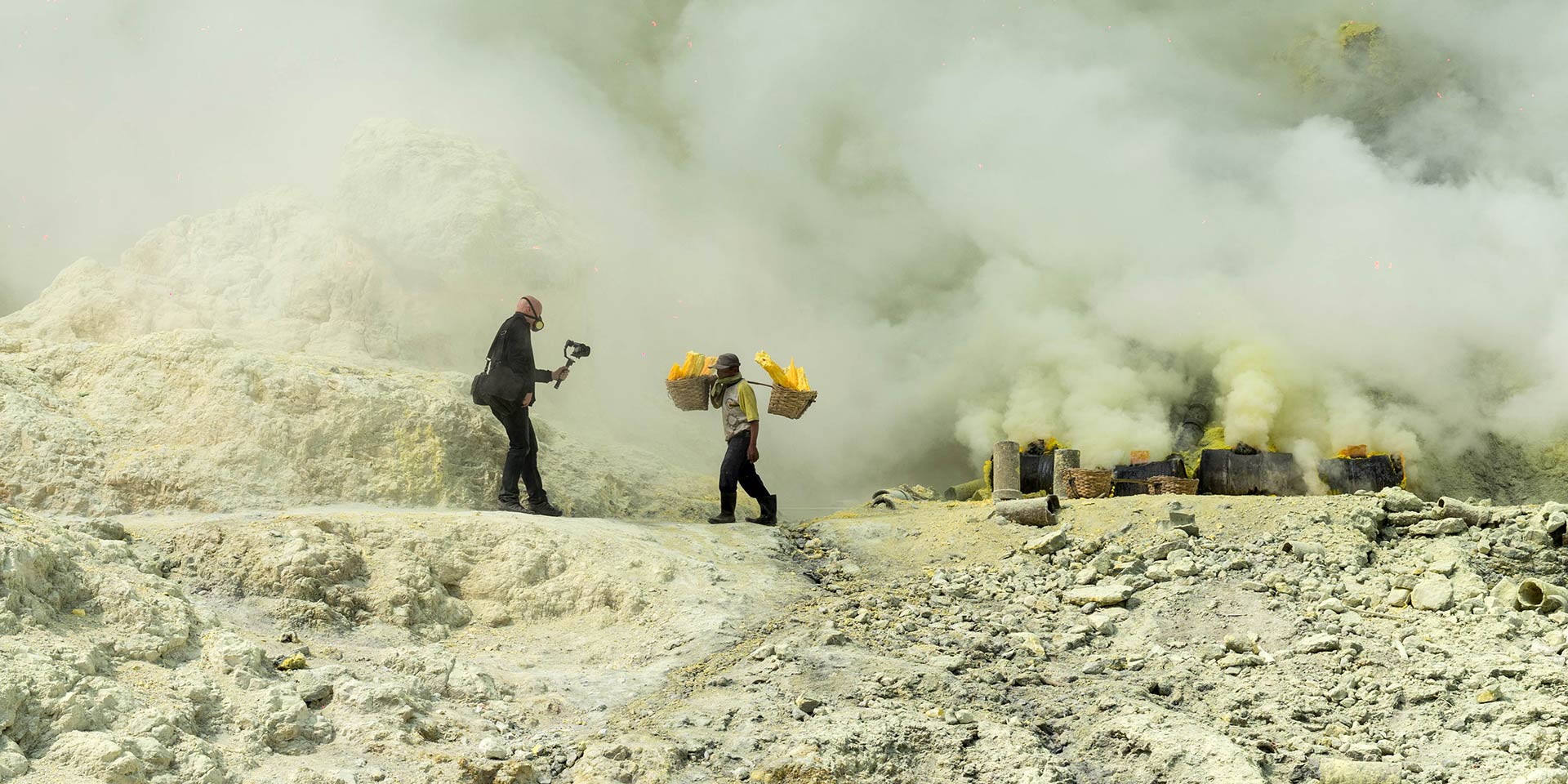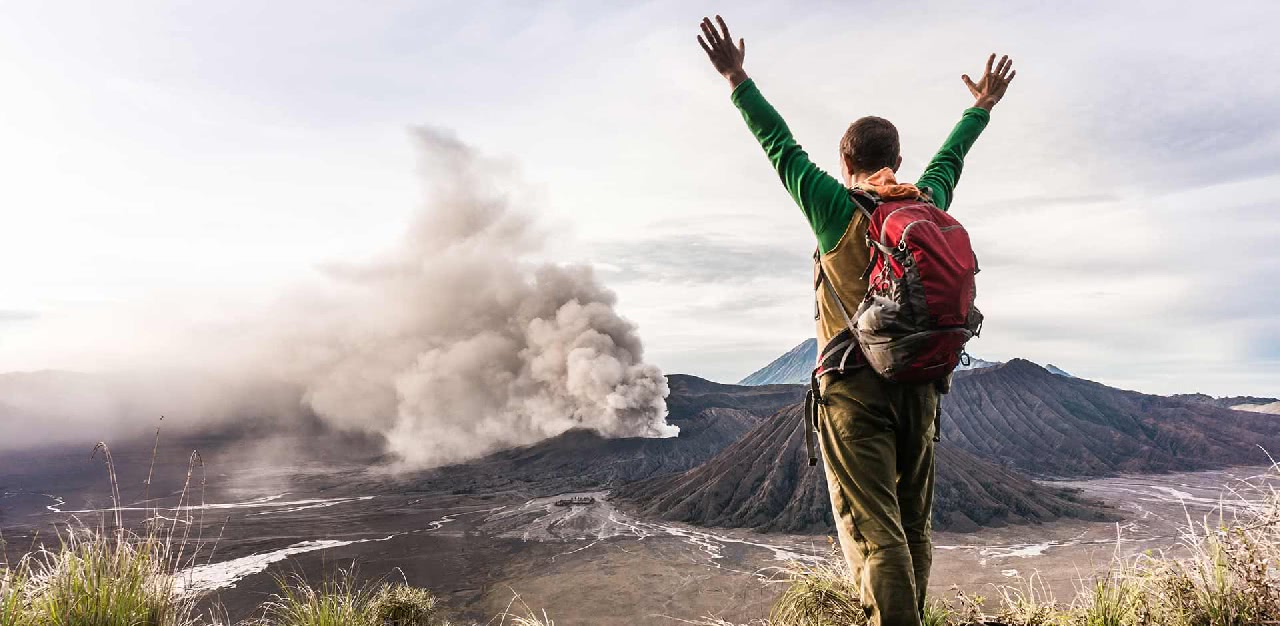Between the sudden potholes, curves, more than 20 hours of travel, we find ourselves in the prosperous banana plantations that characterize Probolinggo and its villages along Mount Bromo. The air becomes increasingly fresh and pungent as we start to rise in altitude; the hairpin turns become more repetitive sand and dust rise in our wake — as the are not exactly paved.
The energy is palpable. We notice fleets of trucks loaded with pilgrims carrying blankets and food, leaving in the direction of Mount Bromo for the Hindu Yadnya Kasada Festival, also known as Kesodo.
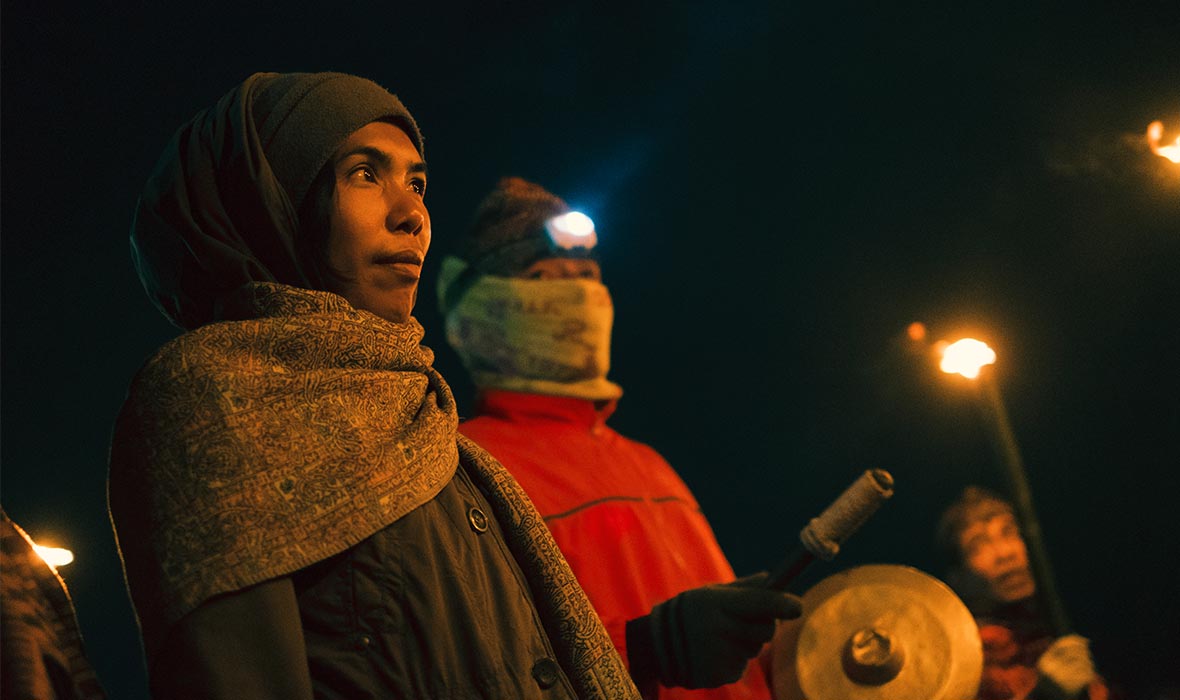
Smiles shine on the sun worn faces of the pilgrims. They are many and the low light favors the context, a sense of suspense toward this long-awaited festival. Where revelers throw vegetables and even livestock into the Bromo volcano for favors from the gods.
Tengger culture has deep roots here; and this festival comes from the legend of the princess Roro Anteng and Joko Seger.
Roro and Joko ruled the Tengger people but were childless despite many years of marriage. One day, they climbed the caldera of Mount Bromo to pray. The gods heard their prayers and granted them 24 children on the condition that the 25th was thrown into the volcano as a human sacrifice. The 25th boy named Kesuma was sacrificed, calming the angry gods of the volcano.

ABOVE: Prayers before the ascent.
Because of this, today celebrants offer their own sacrifices into the crater to appease the gods of the caldera, throwing vegetables, chickens and even goats into the unforgiving crater of Bromo.
On the day of Yadnya Kasada, before sunrise, devotees who have traveled from far and wide go to the slopes of Mount Bromo to pray and throw their sacrifices. While visitors come from all over for the spectacle, the main devotees are the Tenggerese who are the inhabitants of the villages of Ngadsas, the only ones who are considered the true descendants of the Majapahit empire.
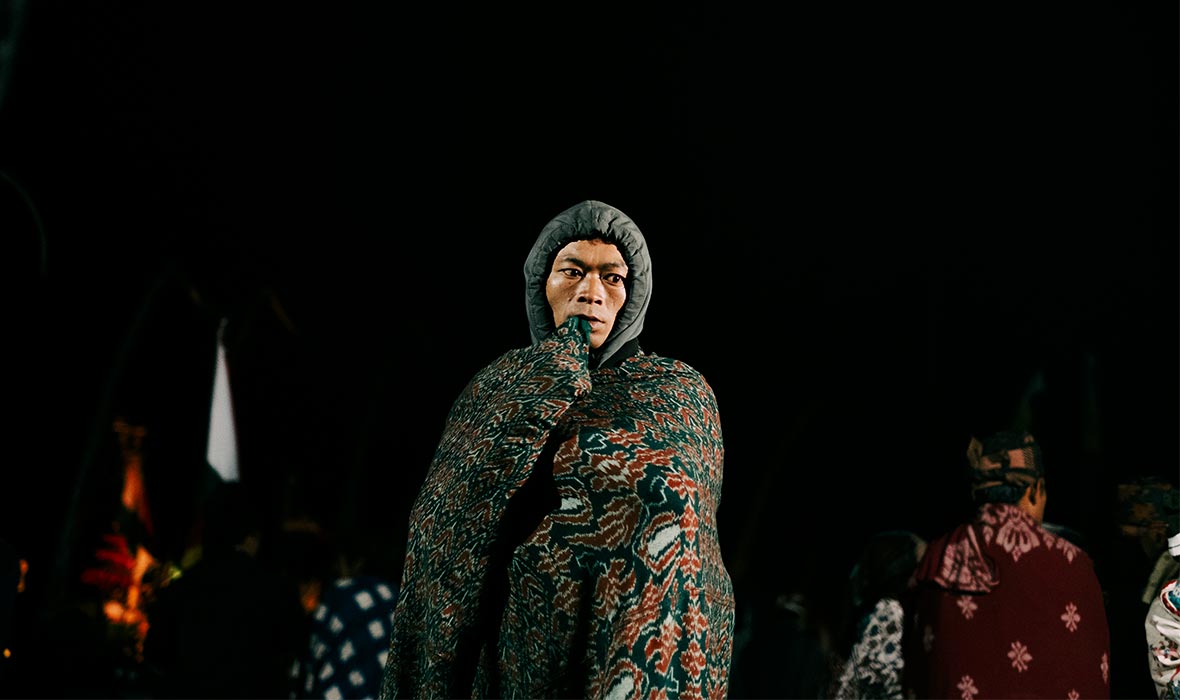
Being a Hindu-Javanese people, they worship the god Ida Sang Hyang together with the gods Brahma, Shiva, and Vishnu, having escaped the Islamization of the island with Princess Roro Anteng. It is a mix of animism and Buddhism. It is no coincidence that Mount Bromo takes this name from Brahma, the destroyer and creator to whom a small sanctuary was erected inside the caldera that hosts the Kesada Festival. The ritual follows the Tengger lunar calendar, and begins in the Ngadisari village with songs that recall the spirits of their ancestors.
Supplied with backpacks of water and food, we leave at 10 in the evening aboard a jeep, one of the few vehicles capable of navigating the dusty slopes of Mount Bromo and crossing the ash-covered Sea of Sand. Twenty minutes of hairpin bends in the dark where other jeeps follow one another, passed loudly by motorbikes.
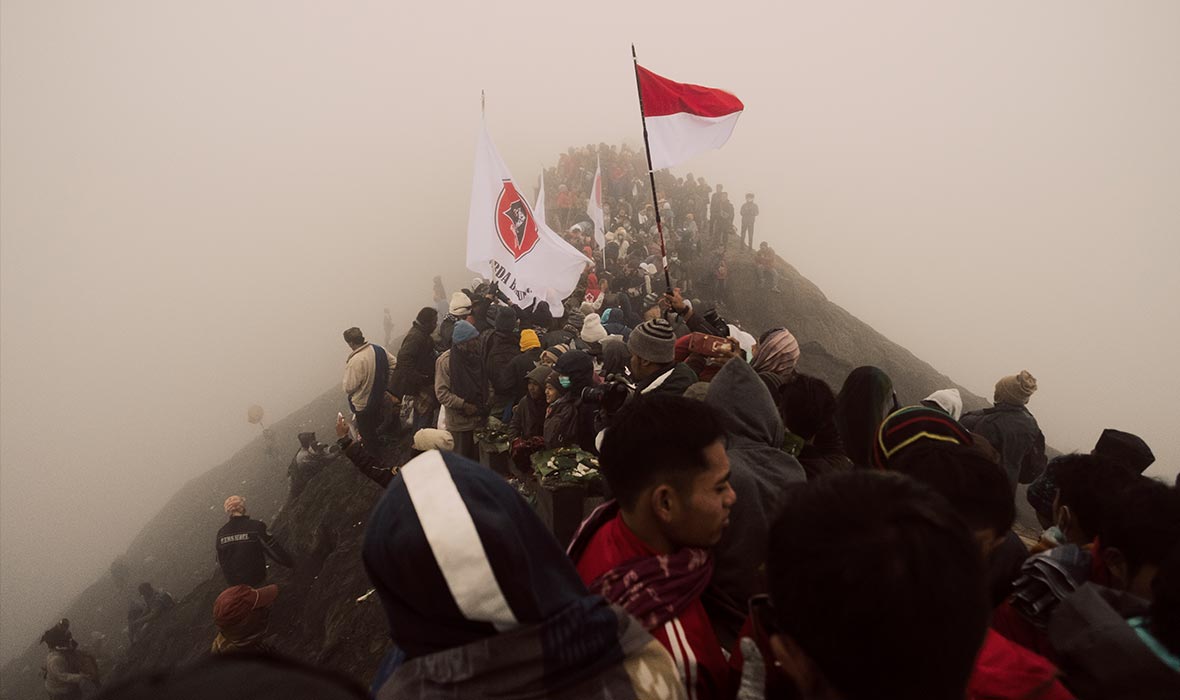
ABOVE: Revelers balance on the rim of Bromo while the braver and more desperate descend into the caldera.
The Sea of Sand feels like another planet: barren, gray, empty. A landscape carved by countless eruptions. We proceed at a slow pace among the crowd; in the dark, with only torches on our heads and a weak light of a phone, jeeps, trucks, and tents surround us.
People are huddled and crowded as they proceed at a slow pace, and we note with amazement that we are among the few foreigners present at the ritual. Curious eyes and shy smiles find our tired and embarrassed faces, but we begin to exchange a few words.

The icy wind continues to blow, leading us to cover our faces with masks and scarves, envying those heavy and colorful blankets that surround our new friends, worn so as not to breathe too much sand and sulfuric gas produced by the volcano.
We move to advance and keep warm. We don’t see faces, only eyes peeking out from the layers of clothes and blankets. The sweet singing seems almost like a lullaby, as the thousands of pilgrims and shamans prepare their sacrifices. The temple, Pura Luhur Poten, is completely surrounded by white haze due to incense and the fog.
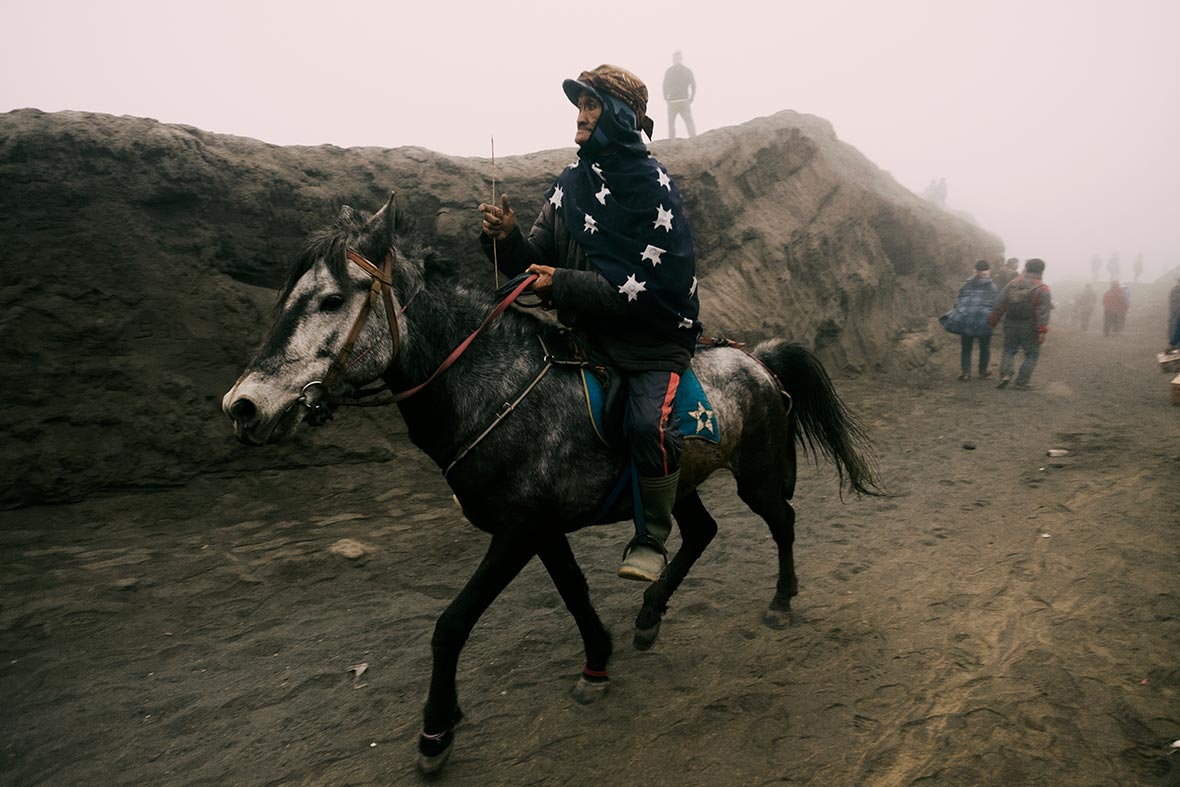
ABOVE: Horse rider on the Bromo ash.
At around 5 in the morning, when we know that in a little while the sun will rise, we all begin the sandy ascent, characterized by narrow, steep portions. Step by step, the cold gives way to adrenaline as we summit the volcano. Inside the crater, right on the edge, is a mass of people. They are all on their feet with their own handmade nets hoping to catch the sacrifices thrown by those above.

To those above, if they sacrifice their food and their animals, it will hopefully bring them luck from the mountain gods. Those inside are risking their lives inside a famously unpredictable volcano’s steep caldera.
This ritual is about devotion. The danger just a few steps in the wrong direction. The Tengger population and thousands of others take on this pilgrimage for the hope of something better.
Mount Bromo is a seemingly peaceful presence during the day, but it comes alive at night: a bleak, smoky scene and a reminder of the devastating power of nature. And it is here that, in my opinion, the power of nature blends with the religious power of the faithful, creating something truly unique.




